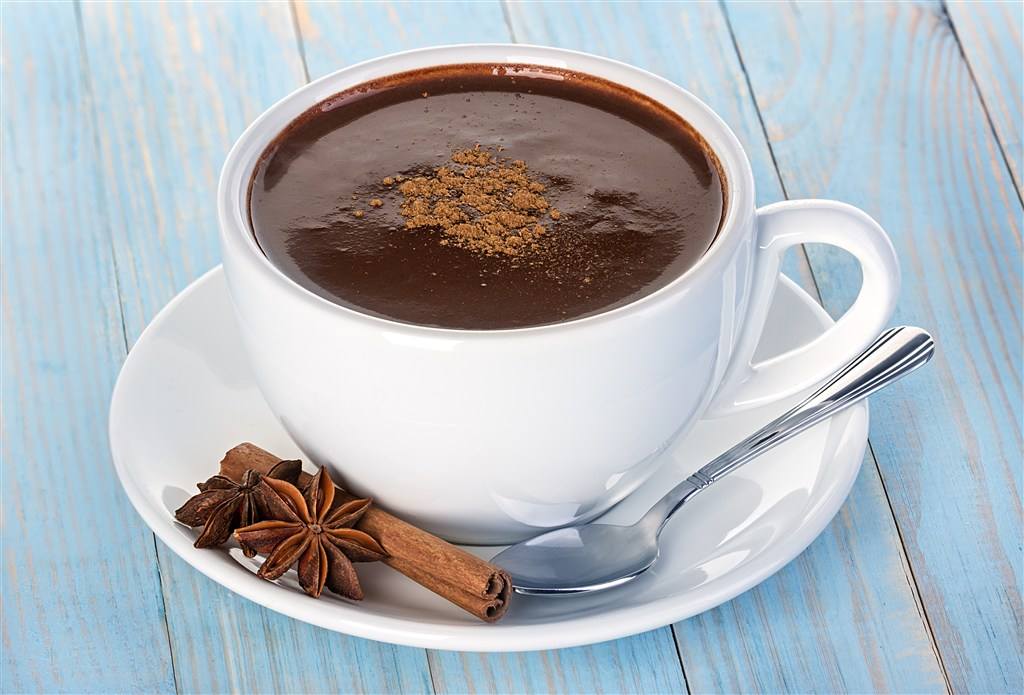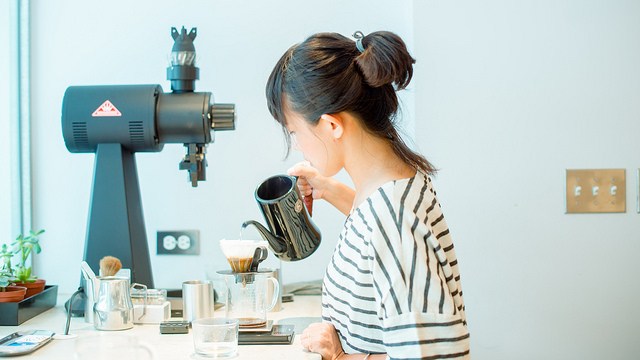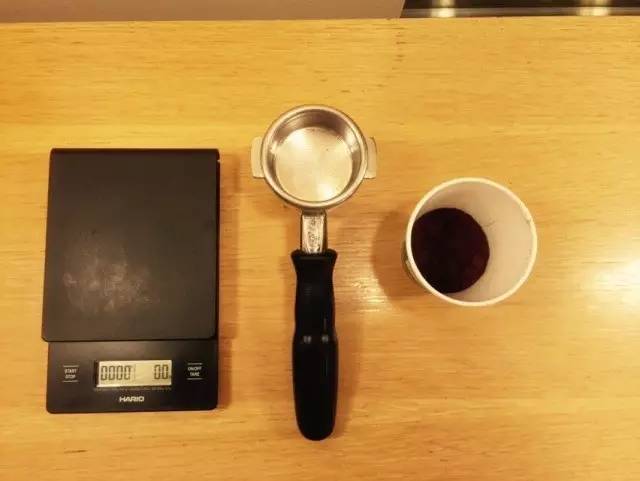The London War between Coffee and Black Tea
Follow the caf é (Wechat official account vdailycom) and found that Beautiful Cafe opened a small shop of its own.
The coffee boom in Britain lasted for 100 years, but in the mid-18th century, it suddenly came to an end. Because the "era of black tea" has come.
The London War between Coffee and Black Tea
(this article is excerpted from "Pirates who make World History")
Oxford is located in the inland university town slightly northwest of London. Who would have thought the university had anything to do with pirates, but the first place in Britain to drink coffee was the prestigious Barrior College of Oxford University. It is said that the Archbishop of Canterbury, William Ludd, brought coffee to Oxford, a scholar from Crete.
The birth of British cafes
When Ludd was president of Oxford University, coffee spread from the Mediterranean. In other words, the emergence of coffee culture is a by-product of academic exchange. Given the shipping situation at the time, it is estimated that Archbishop Ludd used the trading ship of "adventurous merchants" integrated with pirates to bring scholars and coffee to Oxford.
The Coffee Age officially visited Britain in the second half of the 17th century, and half a century has passed since the establishment of the East India Company. The popularity of coffee began to rise at the end of the 17th century, while the golden age of cafe culture did not wait until the 18th century. In this day and age, coffee has become a hot commodity in the East India Company, and cafes in London are booming. During the hundred years from 1650 to 1750, the city of London was known as a cafe. At its peak, more than 3000 cafes were crowded with streets. The author also saw that there were more than 8000 coffee shops in London and the surrounding areas in the early 18th century. As a "coffee capital", London is famous not only in continental Europe, but also in the Ottoman Empire.

The first cafe in London was born in the university town of Oxford in 1650, and the first one in London opened in 1652 two years later. The coffee shop opened by Jacob, a Lebanese-born Jew in Oxford, instantly became a popular place for students, and the coffee culture in the university town was in full bloom. The fierce political struggle between the kings and parliaments, known as the Puritan Revolution (1642-1649), developed into a civil war. To end the war, Parliament executed King Charles I in 1649. Oliver Cromwell, who led the parliamentary faction (who became a Puritan while studying at Oxford), founded a republic to replace dynastic politics (federal government, 1649-1660). Shortly after the founding of the Republic, the first coffee shop in Oxford was born.
Around 1655, coffee culture infiltrated rapidly near Wanling College in Oxford. The coffee boom was not just within Oxford, but city dwellers of London were also involved. The popularity of this kind of coffee also experienced a period of stagnation. During the period of political upheaval from the Restoration (1660) to the Glorious Revolution (1688), including the plague epidemic in 1665 and the fire in London the following year, cafes ushered in difficult times. With the political stability, the victory over the disease and the revival after the fire, the coffee shop has also been revived. The advent of the British cafe era meant that coffee could be imported steadily after 1650. I need to make it clear once again that before that, the import of coffee was extremely unstable, resulting in high prices, a precious item that only limited Britons, such as the aristocracy and the wealthy, could get at a high price.
Club Society-membership Cafe
With the prosperity of British overseas trade, the specialization of cafes has also made progress. People involved in the East India Company frequently visit Lloyd, while enthusiastic supporters of King Charles II use the Man Cafe (commonly known as the Royal Cafe) as a stronghold.
Shops where traders and investors exchange information, shops frequented by ocean-going sailors, shops that mediate trade ship insurance, shops loved by aristocrats, shops used by politicians as meeting places, shops plotting to overthrow the government, stores where literati talk, shops gathered by newspaper reporters, etc., the number of coffee shops full of personality is increasing, and the level of guests in each cafe has become distinct.
Huge amounts of money are flowing and important information is exchanged, while swindlers and criminals begin to show up. Fraudsters who bring groundless ideas to make a lot of money and planners who wantonly recommend baseless career projects also haunt them. while cafes become a stronghold for important information, they are also easy to become places where criminals and victims should not be taken lightly. In this way, the exchange of investment ideas and information cannot be assured. In addition, it is obvious that political opponents have planted spies to gather information in cafes. Operators are racked by how to keep guests from avoiding cafes. So they came up with the idea of limiting the membership cafe, that is, the birth of the club. The cafe adopted the rule that if you can't identify yourself, and you can't join without the recommendation of the members, the club society in Britain has emerged.
When it comes to 18th-century English clubs, the famous literary club of Dr. Samuel Johnson is also very popular in business and political circles. In the business world with huge capital flows, credibility is the most critical, and membership clubs have become indispensable for large-scale business activities. In the politics of power struggle, in order to guard against the leakage of news to hostile forces, there will be a special single room in the cafe for the club to use as a meeting place.
The coffee craze that was created?
As a result, we can assume that the cafe era may actually have been strategically conceived and built by the East India Company. The East India Company has built a system to exclusively buy mocha coffee in the Arabian Peninsula, transport it using a company trading ship that was originally a pirate ship, and sell and circulate the coffee on its own. After the monopolistic enterprises have completed their domination of the market, they then need to set up a pattern of consuming a lot of coffee. Only in this way can we get stable and huge benefits from the coffee trade.
Originally, the East India Company was just a group of individual investors, organizing investment groups and setting up trade fleets. It is very likely that some individual investor told the coffee shop operator the idea of coffee business, thus creating a coffee age. From the existing literature, there is no organized participation of the East India Company, but from the fact that Lloyd has become the gathering place of the East India Company, there is no doubt that there is a close relationship between the two. It is not difficult to imagine that behind the great achievements of cafes as a part of the coffee trading system, the intentions of the two have played a big role.
The coffee boom in Britain lasted for 100 years, but in the mid-18th century, it suddenly came to an end. Because the "era of black tea" has come.
A policy shift from coffee to black tea
In the context of Britain's shift from coffee to black tea, what we cannot ignore is the fierce trade competition with the Netherlands. In order to strengthen trade with East India, the Netherlands established the Dutch East India Company in 1602. After the 18th century, the Dutch East India Company officially joined the production and circulation of Java coffee, which is opposed to mocha coffee. According to Japanese historian Ngong Jizhao, the Dutch East India Company brought coffee saplings to Java in 1696. In the 18th century, the Netherlands developed large-scale coffee plantations in Java in Indonesia and Ceylon in southern India, making coffee cheaper than mocha coffee in large quantities in continental Europe.
Since then, Java Coffee, a new brand competing with Mocha Coffee, has made its official debut. The Netherlands brought cheap coffee to continental Europe, dealing a heavy blow to the coffee trade of the British East India Company. Out of a bleak judgment on the prospect of coffee trade, the British East India Company retreated from the coffee trade on a large scale and rapidly shifted its business core to the tea trade with China while continuing a small amount of coffee trade. Britain also had to change from a "country of coffee" policy to a "country of black tea".
Opinions vary as to why Britain has become the country of black tea. There are roughly the following:
(1) the quality of drinking water (hard water containing calcium and other substances)
(2) the tariff on black tea has been greatly reduced
(3) Queen Mary II and her sister Queen Anne like black tea.
(4) with the rich as the center, the habit of afternoon tea has been widely popularized.
(5) compared with coffee as a male drink, black tea is favored by women and becomes a family drink.
But the biggest reason is that in the face of the rise of the Dutch East India Company, the mocha coffee trade has lost its superiority at the price level, and Britain began to draw a blueprint for monopolizing China's tea trade in order to pursue new interests. this is a policy shift based on practical interests.
The British East India Company has purchased a large amount of Chinese tea in Guangzhou in southern China, gradually opening up ways to steadily provide tea to the United Kingdom. It is precisely because of ensuring a stable supply of Chinese tea that Britain has been able to design itself as a "country of black tea".
Black tea culture from the palace
Generally speaking, the English formed the habit of drinking black tea in the second half of the 17th century. It is said that black tea culture was born when King Charles II of England married Princess Catherine Braganza from Portugal in 1662.
After the execution of King Charles I of England, after the restoration of the dynasty, Charles II, as a prince, was restored as King of England, and introduced the royal bloodline from the few European royals. Princess Catherine of Portugal, who became queen of England, enjoyed valuable black tea in court life and added a part of the dowry brought from Portugal-white granulated sugar with scarce value, thus creating a palace culture with a penchant for black tea and white granulated sugar and blowing a new style into the British royal family.
It is said that the etiquette of drinking black tea also took this opportunity to spread among the aristocracy in an instant. The noble sense of black tea also comes from such aristocratic culture. The black tea brand called Catherine, which is sold in Japan, is also named after Queen Catherine.
But it is said that what Catherine enjoys is not black tea. The English word "tea" means tea, and tea can be divided into black tea and green tea. The East India Company and the Sea of Asia written by Haneda raises questions from various angles. In Britain in the 19th century, high-end "green tea" was being accepted by aristocratic society. Therefore, the tea that the princess is keen on is not black tea, but green tea, which arises spontaneously.
An interpretation of the Cultural History of Black Tea by Chunyama Walker, which quotes an article written by Giovanni Batista Lamuccio, who edited Marco Polo's "Oriental stories" about "Chinese Tea": "the water of fried tea, drinking 1 or 2 cups on an empty stomach can cure fever, headache, stomachache, pain in the abdomen and joints. It also works for so many diseases that you can't remember them. Gout, for example, is one of them. " This article, recorded in Ramusio's Voyage and Travel (published circa 1559), is considered to be the earliest document to spread the utility of tea to Europe in detail.
As mentioned in this way, "tea" has attracted attention as a medicine, so it is widely accepted by the British royal family and the wealthy, and with the passage of time, it goes to the public.
Important Notice :
前街咖啡 FrontStreet Coffee has moved to new addredd:
FrontStreet Coffee Address: 315,Donghua East Road,GuangZhou
Tel:020 38364473
- Prev

How do you make yourself look like you know how to make coffee?
Professional barista communication, please pay attention to coffee workshop (Weixin Official Accounts cafe_style ) With the promotion of coffee and the evolution of coffee essence, more and more people know how to go to coffee shops to order a cup of hand-brewed coffee that is fine for them. He ordered a cup of coffee. The menu said it was fine coffee, and the price was fifty or sixty yuan or even more than a hundred yuan per cup. But I'm pretty sure that's the only way
- Next

In the world of boutique coffee, it is necessary to ensure the consistency of espresso taste.
For professional baristas, no matter how busy they are, they should consider the consistency of their products. In fact, in the world of boutique coffee, consistency is the most critical. In order to ensure the taste of every espresso. For hand-brewed coffee, electronic scales are essential, isn't it necessary for espresso? How to solve the inconsistency of espresso products? Want to reduce or even eliminate unknown factors
Related
- Beginners will see the "Coffee pull flower" guide!
- What is the difference between ice blog purified milk and ordinary milk coffee?
- Why is the Philippines the largest producer of crops in Liberia?
- For coffee extraction, should the fine powder be retained?
- How does extracted espresso fill pressed powder? How much strength does it take to press the powder?
- How to make jasmine cold extract coffee? Is the jasmine + latte good?
- Will this little toy really make the coffee taste better? How does Lily Drip affect coffee extraction?
- Will the action of slapping the filter cup also affect coffee extraction?
- What's the difference between powder-to-water ratio and powder-to-liquid ratio?
- What is the Ethiopian local species? What does it have to do with Heirloom native species?

